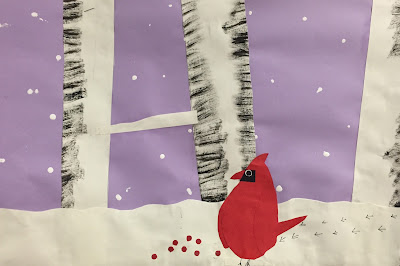It is my delight to introduce a guest writer for my blog today. I was recently contacted by Margaret Orr, an animator and filmmaker from Bloomington, Indiana whose short films have been featured in film festivals around the world.
Margaret is working to raise funds in order to work with early primary grade students in Chicago Public Schools on a very innovative animation project. As you find out by reading below, Margaret has a passion for animation and truly wishes that all age levels get to experience the magic of creating their own animation project. Click here to visit her Kickstarter page.
And now, the words of animator Margaret Orr:
Film and animation are art forms that are difficult to bring into a classroom.
Animation, in particular, requires a level of patience that young children simply
have not yet developed. As a result, young children are rarely exposed to this art
form, and often miss out on its lessons.
I am not a teacher. I’m an animator and filmmaker. I first taught animation
to students when working at summer camps as a college student. In my
experience, once students reach about the age of 10, they really appreciate and
are sufficiently motivated by animation. They're willing to sit down and draw for
hours, sometimes making several hundred individual drawings to tell their stories.
But younger students, especially those aged 6-8, tend to get extremely excited
about the idea of making a movie, but don't have the patience to express
themselves one frame at a time.

An answer to this problem comes from the history of animation, and is the
inspiration for a project I am working on called Scribble. Long before Disney,
back when film was brand new, innovative artists realized that they could scratch
into the emulsion of film stock to draw pictures on film. We’re doing something a
little different, but the principle is the same. By drawing onto “clear leader film”
(which is a fancy way of saying clear plastic film) the students can create
movement quickly in an accessible way. The students can use a wide variety of
techniques to animate, depending on their interest levels, patience, and skill. For
instance, they can use the film like a canvas and draw across it without concern
for where each individual frame is, resulting in an abstract and disjointed
animation. Or they can pay closer attention to where the frames are and actually
create movement from frame to frame. They can use a wide variety of materials
to create the film, including sharpie markers, paint, stamps, allowing for a wide
variety of aesthetics and creative choices.
So what do you need to make something similar happen in your own
classroom? There’s an unlimited number of ways to go about this. For Scribble,
we’re using 35 mm clear leader film, chosen because it’s thicker than 16 mm,
and thus a little easier for first-graders to use. But if you’re working with older
children 16 mm film will work just as well and has the added benefit of being less
expensive. Set up is fairly easy. We tape brown paper on the tables, use
masking tape to tape the leader film onto the paper, and mark the paper with
each frame interval (for 35 mm film there is one frame for every four sprocket
holes). The students draw on the film with sharpie markers. I use a film-to-digital
converter to digitize the artwork and edit it into a film, but you could also
purchase a projector and screen the film directly.
Out students will have the opportunity to work with professional artists to
create a film that will play at film festivals. We’re working with an incredibly
talented composer, Aaron Marshall, to create music for the film. I have created four films over the last four years, all of which have played at international film
festivals, so I have extensive experience with the festival circuit. We want the
kids to be able to see their work on a big screen, with a packed audience to
applaud when their names roll across the screen at the end. This project is as
much about inspiring the next generation of filmmakers as it is about creating a
film.
 |
| Examples of film created in the style described in the paragraph above. Very cool! |
If you would like to support the project we’re currently raising funds for
Scribble on Kickstarter. We’ll be using funds raised to purchase materials (film,
markers, a film-to-digital converter, etc.), pay for the time of our composer, and
for entry into film festivals once the film is completed.














